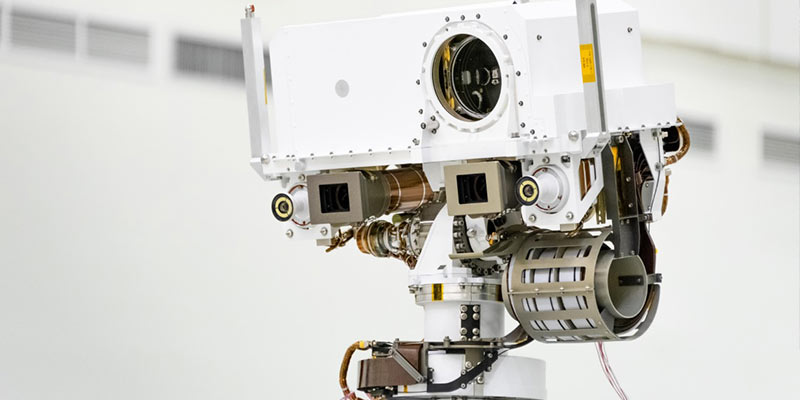- World
- Feb 13
Short Takes / SuperCam on Mars 2020
One of the seven instruments aboard the Mars 2020 rover that will be launched in July by NASA is a SuperCam that was built by a team of hundreds.
SuperCam is a rock-vaporising instrument that will help scientists hunt for Mars fossils. This new laser-toting robot is no bigger than a cereal box. It will be used for studying mineralogy and chemistry from up to about 7 m away. It might help scientists find signs of fossilised microbial life on the Red Planet.
It will help to identify the chemical composition of rocks and soils, including their atomic and molecular make-up
How does the SuperCam work?
It fires a pulsed laser beam out of the rover’s mast, or ‘head’, to vaporise small portions of rock from a distance, providing information that will be essential to the mission’s success.
Using a laser beam will help researchers identify minerals that are beyond the reach of the rover’s robotic arm or in areas too steep for the rover to go. It will also enable them to analyse a target before deciding whether to guide the rover there for further analysis.
Scientists can also use the information from SuperCam to help decide whether to capture rock cores for the rover’s sample caching system. Mars 2020 will collect these core samples in metal tubes, eventually depositing them at a predetermined location for a future mission to retrieve and bring back to Earth.
What are the SuperCam’s other features?
SuperCam is essentially a next-generation version of the Curiosity rover’s ChemCam. Just like ChemCam, SuperCam will use artificial intelligence to seek out rock targets worth zapping during and after drives, when humans are out of the loop. In addition, this upgraded AI lets SuperCam point very precisely at small rock features.
Another new feature in SuperCam is a green laser that can determine the molecular composition of surface materials. This green beam excites the chemical bonds in a sample and produces a signal depending on which elements are bonded together - a technique called Raman spectroscopy.
Also, SuperCam can use visible and infrared (VISIR) light reflected from the sun to study the mineral content of rocks and sediments. This VISIR technique complements the Raman spectroscopy.
SuperCam includes a microphone so scientists can listen each time the laser hits a target. The popping sound created by the laser subtly changes depending on a rock’s material properties.
Manorama Yearbook app is now available on Google Play Store and iOS App Store

